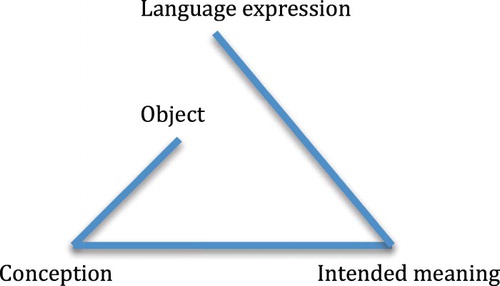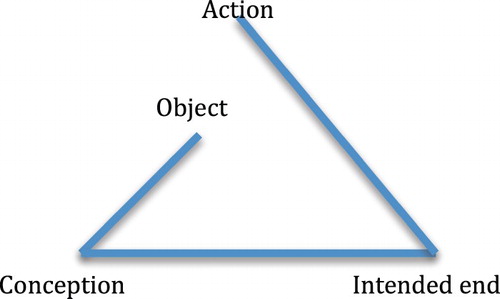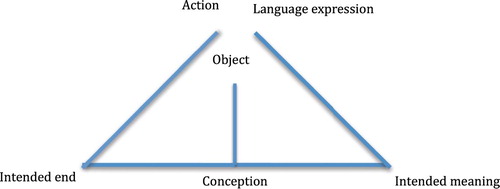Figures & data
Figure 1. The intentional-expressive model of language use in learning. This illustration is based on in Anderberg et al. (Citation2008) and is used here with the kind permission of Elsie Anderberg.

Figure 2. Our practice-oriented modification of the model by Anderberg et al. (Citation2008). In this version the focus is on practice (action) as a way of achieving an intended end that relates to an understanding/conception of an object of learning.

Table 1. The table summarises key points of the analysis regarding the interaction between theory-oriented and practice-oriented activities that occurred during the laboratory session in Appendix A. For a more detailed account of the analysis, see below.
Figure 3. This figure combines the intentional-expressive model of language use in learning (Anderberg et al. Citation2008), see above, and our own practice-oriented modification of that model, see . The combined model highlights that the two separate models share two of their nodes, namely the object of learning and the conception. This serves to illustrate how the interplay between theory-oriented actions and practice-oriented actions can lead to a gradually evolving conception of the object of learning.

